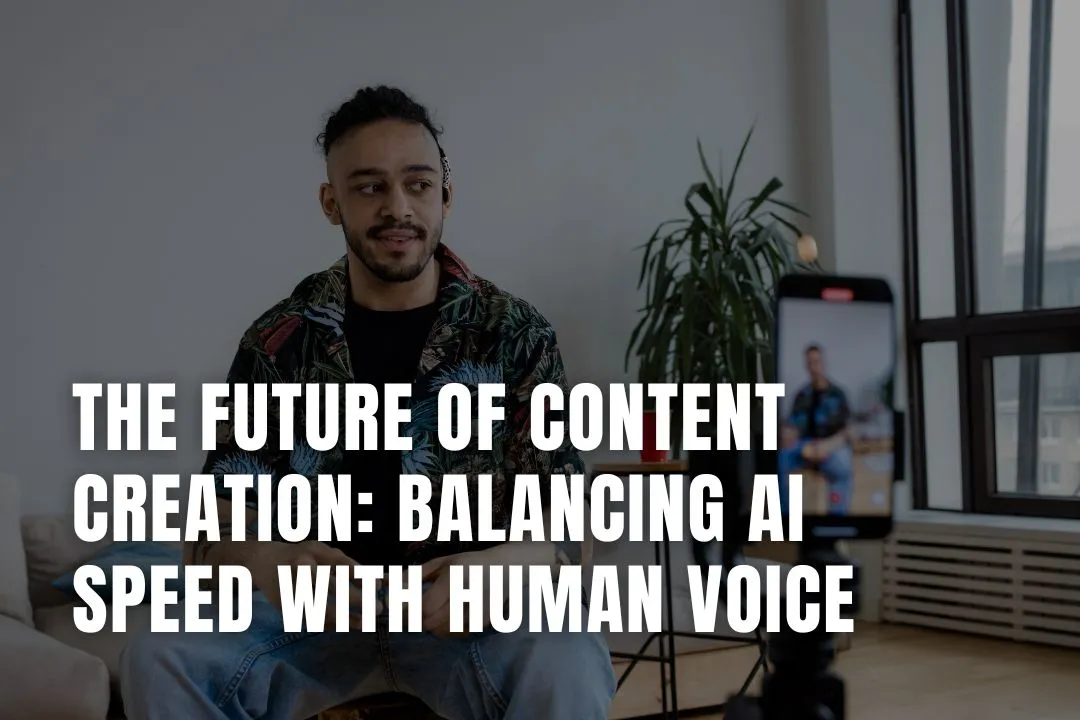
Content creation is an excellent way to earn money in this digital era, whether it’s a side hustle or your main source of income. It has potential. But it also comes with challenges. It demands speed and volume without compromising quality.
Artificial Intelligence (AI) extends a helping hand. It churns out articles in seconds, capable of generating drafts based on specified prompts. In many cases, however, outputs appear bland and robotic. It requires adding a human touch to resonate with your target audience. That makes it more effective. The challenge is to combine the speed of AI with the genuine voice of humans.

AI tools change the way we create content. It used to depend on rigorous research that could take hours. You’ll read several articles and pull quotes. The process is hands-on but slow. That may not be suitable for those who are thinking about scalability.
The introduction of AI shifts the landscape. It handles the heavy lifting. You can generate a full blog post with a single prompt. What took hours now takes seconds. This efficiency also helps cut costs as it relies on machine intelligence to create more materials with fewer resources.
But the problem moves beyond capabilities. AI can generate words. The real test is how they connect to the target audience. Does the final output engage humans? Speed alone falls short.
True connection requires something deeper. From winning scripts to effective blog posts, that spark comes from the human voice. Shared experiences, genuine empathy, and authentic perspectives are hard for machines to replicate. Tone and intent come from people who lived the ideas they’re sharing.
Human creators build trust. They understand subtle context and cultural nuance. They share real stories that reflect humor and vulnerability. It creates resonance and fosters loyalty. People engage with people. They react positively when they find content relatable instead of being flat and robotic.
Human voice shapes content. It gives soul to written words. Content becomes forgettable without this voice. The problem? It’s slow and inefficient. Human writers cannot match the speed that machines can deliver.
Looking for a winning strategy that will elevate your content creation workflow? Utilize a mix of AI and humans. Use AI for its raw power. It’s handy for rapid drafting and data crunching. You can scale efficiently. Pair it with human craftsmanship. This will polish the tone and smooth out unnatural sentences. Human oversight injects a truer character and ensures brand voice consistency. It applies ethical judgments that AI can’t deliver.
Think of AI as a powerful engine that generates raw materials. Humans act as expert drivers and navigators. They steer content with purpose, empathy, and strategic insight. That partnership leverages speed and soul. It respects audience intelligence by delivering substance shaped by genuine understanding. The results resonate far deeper than either could achieve alone.
Raw AI content needs thoughtful sculpting to feel more human. This transformation requires a deliberate effort. It bridges the gap between machine efficiency and audience connection.
Who are you writing for? Being familiar with your audience increases the chances of creating content that connects. Content for business executives requires a different approach from one that targets stay-at-home moms.
Provide detailed context in your AI prompts. Specify the desired tone, such as whether you want it to be formal or conversational. Identify the key points you would like to raise. Mention examples of your brand voice.
Go beyond the surface when reviewing the output. Scrutinize every sentence that AI generates. Does it sound natural? Is it in line with the perspectives you want to establish? Rewrite liberally for clarity and flow.
Add relevant anecdotes, case studies, or unique observations. Real stories build instant credibility and relatability. It makes the audience feel something. As such, there’s a higher chance that your content will trigger the desired action.
AI-generated content is often laden with verbosity. It’s common for such tools to write in a passive voice. Reframing it to active voice and editing to remove fluff can make the content appear more human. Become a more effective communicator by focusing on quality over quantity.
One thing you’ll notice about AI-written output is that it has a robotic flow. Words like “hence” and “furthermore” are overused. Use simpler connectors that also sound more human, making sure the sentences and thoughts flow smoothly.
Using AI responsibly calls for conscious choices. Transparency is important. Your audience has the right to know if the content is AI-generated. Disclosure builds trust. This is especially the case if you’re writing about sensitive topics.
AI biases require attention. Tech tools may be skewed towards a certain way of thinking depending on how they’re trained. There may be hidden prejudices. They can affect your writing. Human editors must identify and correct unfair assumptions.
There’s also a risk of misinformation. Some AI platforms do not have updated knowledge. Others, however, may generate factual errors. Fact-checking is non-negotiable. Adding sources and citations is also a good idea, which can make the content more credible.
Overproduction is another issue to address. It’s easy to flood multiple platforms with hundreds of subpar content. Go easy! Maintain high editorial integrity and deliver exceptional value.
Content creation is now more powerful than ever. Thanks to AI, speed isn’t an issue. But generating written outputs in seconds may lead to compromising quality. That’s where human inputs matter. Adding a human voice builds a stronger connection with the audience. It builds trust and credibility.